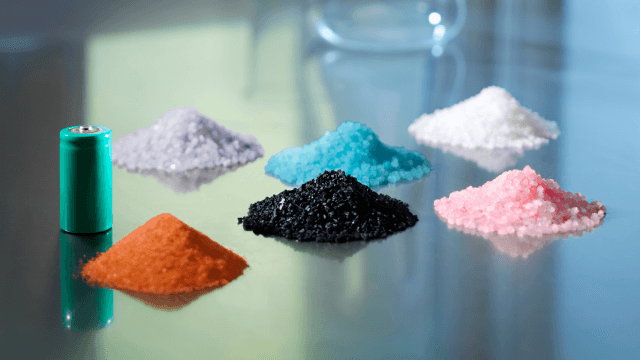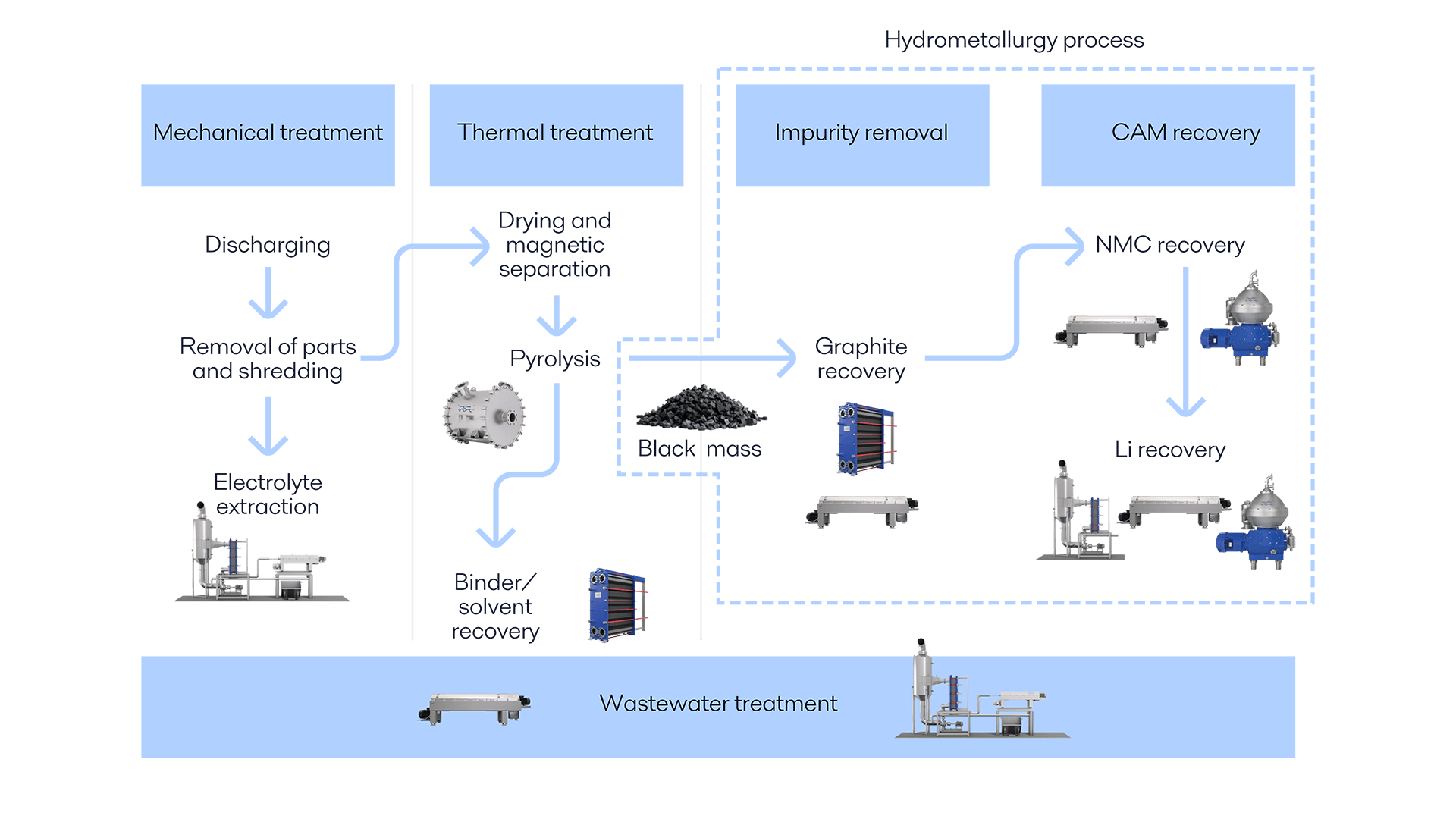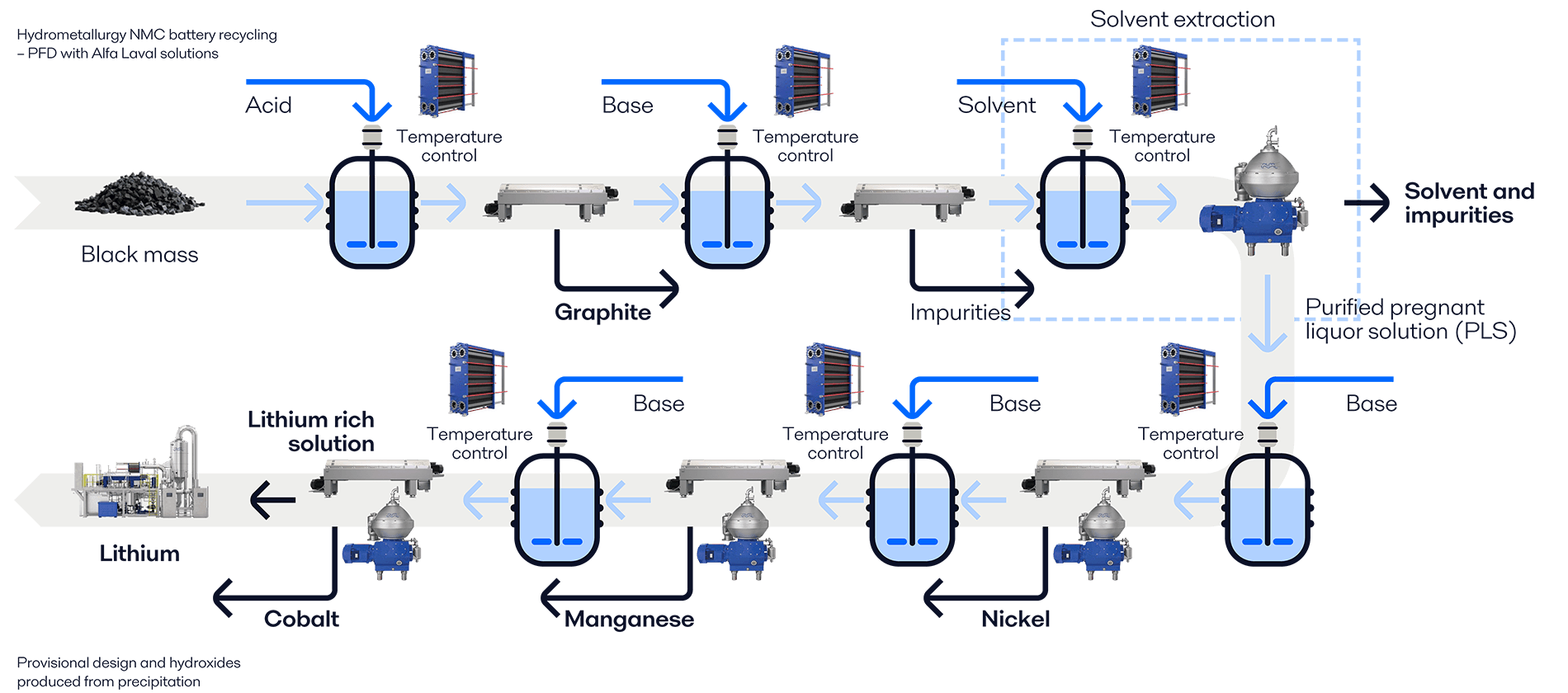Battery recycling
The surge in demand for lithium-ion batteries raises concerns about the sustainability and availability of critical minerals like lithium, cobalt, and nickel. Recycling batteries helps mitigate the environmental impact of mining and reduces the reliance on finite natural resources. By recovering valuable materials from used batteries, recycling supports a circular economy and ensures a more sustainable supply chain for future battery production.
Moreover, recycling lithium-ion batteries plays a crucial role in reducing greenhouse gas emissions associated with battery production. The IEA notes that recycling can significantly lower the demand for primary critical minerals, potentially reducing lithium and nickel demand by 25% and cobalt demand by 40% by 2050.
Alfa Laval empowers you to achieve:
- Boosted product recovery
- Optimized product purity
- Improved energy efficiency
- Sustainable water management

Meeting battery recycling needs with cutting-edge solutions
Alfa Laval’s separation and heat transfer solutions provide significant process improvements within battery recycling, specifically in hydrometallurgy processes. In battery recycling, evaporation systems are ideal for crystallizing valuable metals and by-products, while centrifugal separation solutions excel at removing impurities or separating crystals from liquid solutions.
Additionally, as hydrometallurgy processes generate substantial wastewater, energy-efficient wastewater treatment is essential to reduce costs and environmental impact. Alfa Laval’s Zero Liquid Discharge (ZLD) technology minimizes waste weight and volume, allowing water to be reused. This process often enables the recovery of valuable materials that would otherwise be lost, enhancing both sustainability and efficiency in battery recycling.
Process overview
Battery recycling involves recovering valuable materials from end-of-life batteries and production scrap typically using pyrometallurgy and hydrometallurgy processes. Pyrometallurgy uses high temperatures to smelt and refine metals like cobalt, copper, and nickel, producing alloys and slag. Whereas, hydrometallurgy employs leaching agents to dissolve metals into solutions, followed by purification and recovery through solvent extraction and electrowinning. Both methods aim to reclaim metals, reduce environmental impact, and support the circular economy in battery manufacturing.


Decanter centrifuges
Alfa Laval decanter centrifuges help you with solid-liquid separation within one single continuous process.
The decanter centrifuges efficiently separate the materials during the recycling process to recover valuable resources such as graphite, lithium, nickel, manganese and cobalt.
.
Disc-stack separators
Alfa Laval disc-stack separators provide reliable and highly efficient separation performance for the recovery of CAM, especially when dealing with fine particles.
Beside solid-liquid separation, disc-stack separators can be used for liquid-liquid separation. Recovery of the solvent in a solvent extraction process is an example of where this solution can be used.
Evaporation
Alfa Laval offers complete evaporation systems optimized for your specific needs.
Alfa Laval evaporators offer highly efficient thermal systems to concentrate process liquids economically while preserving the quality of the final product. An example of this in practice could be crystallization by evaporation where Alfa Laval offer reliable solutions.
Heat transfer
Alfa Laval offers a wide range of gasketed and welded plate type heat exchangers that are highly efficient, compact, and flexible in their design.
Zero liquid discharge
Water plays a critical role in every step of the battery industry, but as it becomes contaminated through use, it requires proper treatment to enable reuse.
Alfa Laval’s compact Zero Liquid Discharge (ZLD) solutions are specifically designed to recycle high volumes of water in an energy-efficient way. In addition to water recovery, the process also enables the retrieval of valuable materials that would otherwise be lost.
